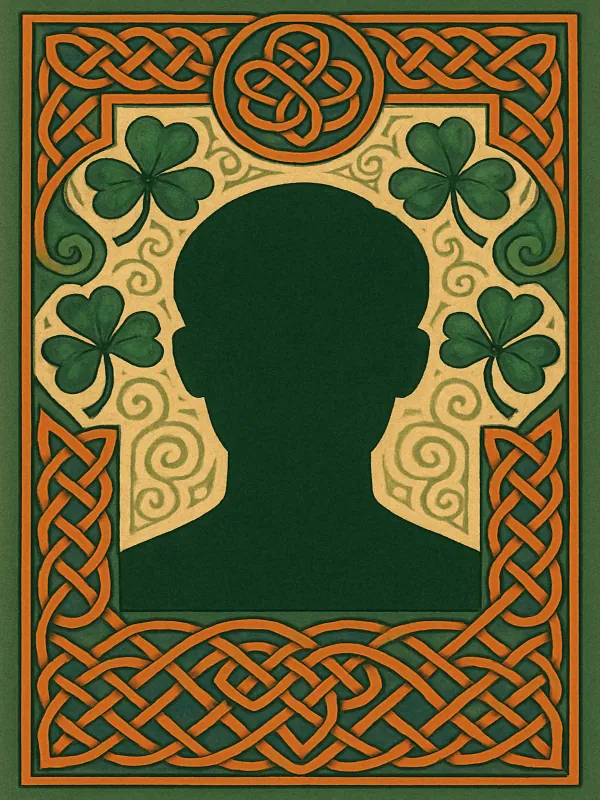George Nugent Reynolds
Biography

George Nugent Reynolds was an Irish poet and balladeer from County Leitrim, remembered for his patriotic songs and verses of the 1790s. He was the last male heir of the historic Reynolds (Mac Rannall) family of Loughscur (also called Letterfine) in south Leitrim, a Gaelic lineage traditionally descended from Ragnall son of Muirceartoig Maol, chiefs of the Muintir Eolais (Magh Rein) region. Reynolds was born at Letterfine, Co. Leitrim, around 1768 to George Reynolds (d. 1786) of Letterfyan and his wife Jane. His father was a well-to-do country squire (noted even for patronizing the blind harpist Turlough O’Carolan) but was killed on 16 October 1786 in a duel with Robert Keon. The poet was then still a minor; he and his two sisters (Mary Anne and Bridget) survived their father. (Mary Anne later married Colonel John Peyton and Captain Richard McNamara; Bridget married Richard Young Reynolds.)
Reynolds grew up to inherit the family estates and succeed as head of the Loughscur Reynolds. A Protestant gentleman by background, he became active in the vibrant political-literary culture of Dublin after 1790. Almost immediately he began contributing songs and ballads to Dublin periodicals such as the Sentimental and Masonic Magazine (1792–95), W. P. Carey’s Evening Star, and Watty Cox’s Irish Magazine. He typically signed his pieces with initials or pseudonyms (e.g. “G—e R—s”). Many of his writings drew on Irish themes and airs. For example, in 1792 Reynolds published “The Catholic’s Lamentation” (the song beginning “Green were the fields where my forefathers dwelt”), a nostalgic lyric mourning the loss of Irish lands. Another song, “Kathleen O’More” (often spelled O’Moore), became especially popular: upon its appearance in 1800 it reportedly went through at least thirteen editions. He also wrote longer works – in 1791 he issued ”The Panthead”, an heroic poem in four cantos, and in 1797 he provided the words for a musical drama Bantry Bay, or the Loyal Peasants (set to music by William Reeve), which was successfully staged at Covent Garden and published in London that year.
Several of Reynolds’s compositions carried an unmistakably political flavor. “The Catholic’s Lamentation” (also called “The Exiled Irishman’s Lamentation”) was explicitly nationalist in sentiment, set to the traditional air “Savourneen Dheelish”, and even invoked the slogan “Erin go bragh”. In contrast, Bantry Bay celebrated Irish loyalists repelling a French invasion. (Decades later, Reynolds’s relatives claimed he also authored the famous ballad “The Exile of Erin” (1801) though modern scholars still credit the Scottish poet Thomas Campbell.) Not all works ascribed to Reynolds were genuinely his: for example, the popular street ballad “Mary Le More (The Maniac of 1798)” was actually written by the Liverpool poet Edward Rushton, and a 17th-century song “King James’s Welcome to Ireland” was long misattributed to him. Nonetheless, Reynolds’s own lyrics earned him notice in Irish song collections. A late-19th-century anthology remarks that his songs “Kathleen O’More” and “Green were the Fields” “were widely sung”, set to Irish airs, and “if they are not of the highest excellence” they have helped preserve those traditional melodies.
Reynolds’s work and persona placed him among the liberal-nationalist circles of his day. Although a member of the Protestant landed class, he was “a well-known contributor to general magazines supportive of the United Irishmen” during the mid-1790s. By all accounts he was a popular and witty figure in society, yet his sympathies (or at least the tone of his verses) drew suspicion. He served as a local yeomanry officer and was appointed a justice of the peace for Leitrim and Roscommon, but in 1799 the Lord Chancellor John FitzGibbon (Earl of Clare) abruptly removed him as a magistrate “on the ground that his loyalty was doubted”. Reynolds promptly answered with a defiant public letter (published in Watty Cox’s Magazine), satirizing FitzGibbon’s own Catholic schooling at St. Omer. This incident – at the height of the post-rebellion “round-up” – made Reynolds a minor celebrity and cemented his reputation as a spirited defender of Irish Catholic grievances.
In the spring of 1801, Reynolds traveled to England to study law, but his promising career was cut short. Early in 1802, while visiting his kinsman the Duke of Buckingham at Stowe, Buckinghamshire, he fell ill and died on 6 February 1802. He was buried at Stowe. Dying without children, Reynolds left his estates to his two sisters. With his passing the senior Reynolds line of Loughscur ended.
Reception and Legacy
In his own time, Reynolds enjoyed considerable popularity through the ballad press and the stage. His songs were reprinted in successive collections of Irish verse, and even in the late 19th century critics remembered them as part of the Irish patriotic tradition. By modern standards he is regarded as a minor figure – Thomas Moore would later eclipse him as the great Anglo-Irish lyricist – but Reynolds’s work is of interest to scholars for its vivid reflection of late-18th-century Irish sentiment. His best-known lyrics (notably the Lamentation/Green Fields and Kathleen O’More) exemplify the blend of folk melody and political commentary common to the United Irish era. Reynolds’s career carries the very stamp of his period: a Protestant squire writing in support of Irish Catholic and nationalist causes on the eve of the 1798 Rebellion. In short, he remains remembered as a talented balladeer whose songs voiced the hopes and grievances of his generation.
Works
- The Panthead (1791)
- The Catholic’s Lamentation / Green Were the Fields (1792)
- Bantry Bay, or the Loyal Peasants (1797)
- Kathleen O'More (1800)
References
- “Edgeworth, Maria: General Commentary.” Feminism in Literature: A Gale Critical Companion. Retrieved May 5, 2025 from Encyclopedia.com: https://www.encyclopedia.com/social-sciences/encyclopedias-almanacs-transcripts-and-maps/edgeworth-maria-general-commentary
- Nichols, J. G. (1866). Irish Family History. In The Herald and Genealogist (Vol. III, pp. 248–251). J. G. Nichols and R. C. Nichols.
- Reynolds (Loughscur). University of Galway | Landed Estates. (n.d.). https://landedestates.ie/estate/595
- Rooney, W. (1899, October 7). Our songs and songsters. The United Irishman. Retrieved May 29, 2025, from https://cartlann.org/authors/william-rooney/our-songs-and-songsters/
- University College Cork. (n.d.). Note 39 in Lewis Dillwyn’s visit to Kerry, 1809. Corpus of Electronic Texts (CELT). https://celt.ucc.ie/published/E800005-001/note039.html
- Wikimedia Foundation, Inc. (2020, December 28). Dictionary of national biography, 1885-1900/reynolds, George Nugent. Wikisource. https://en.wikisource.org/wiki/Dictionary_of_National_Biography,_1885-1900/Reynolds,_George_Nugent
